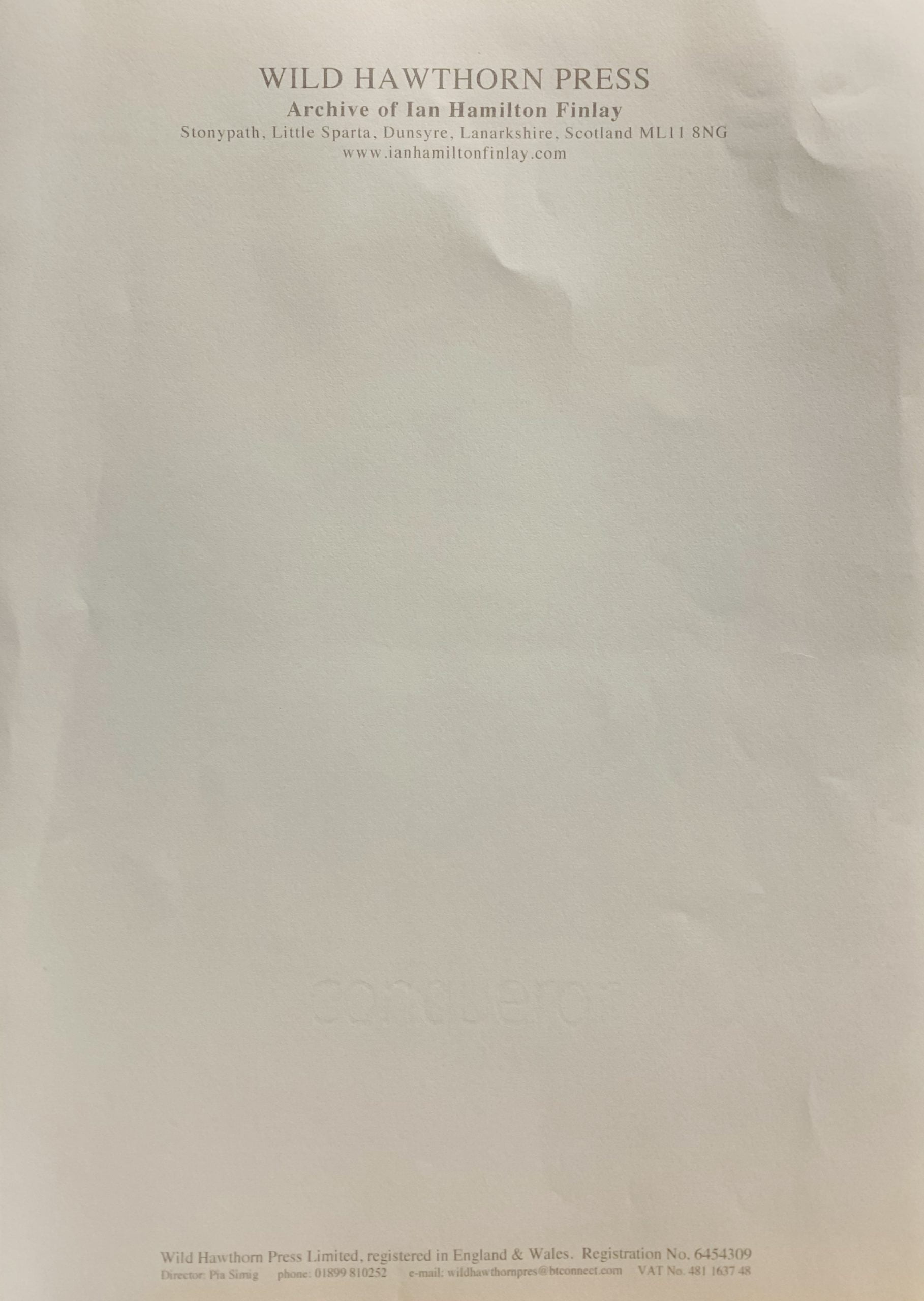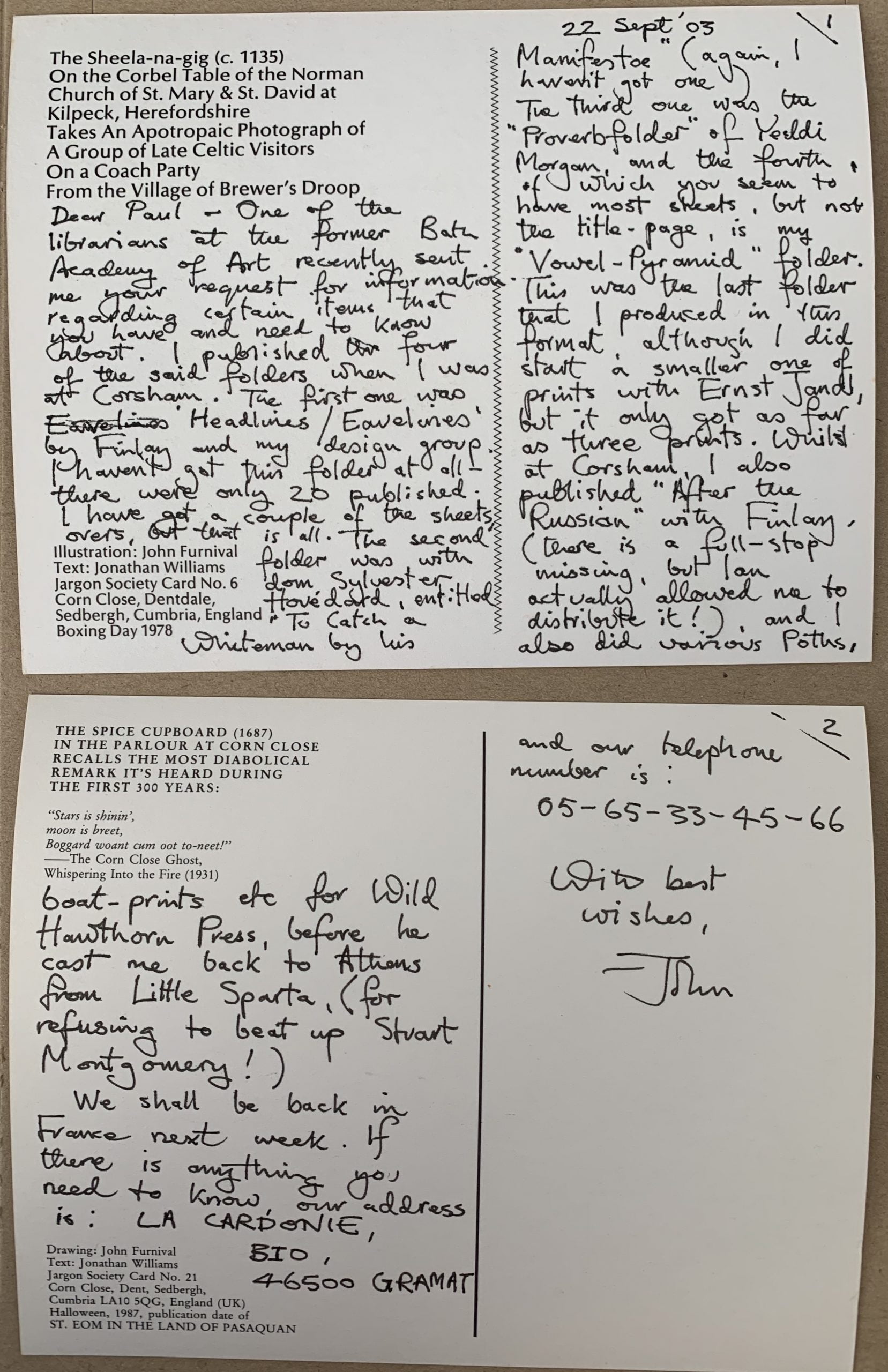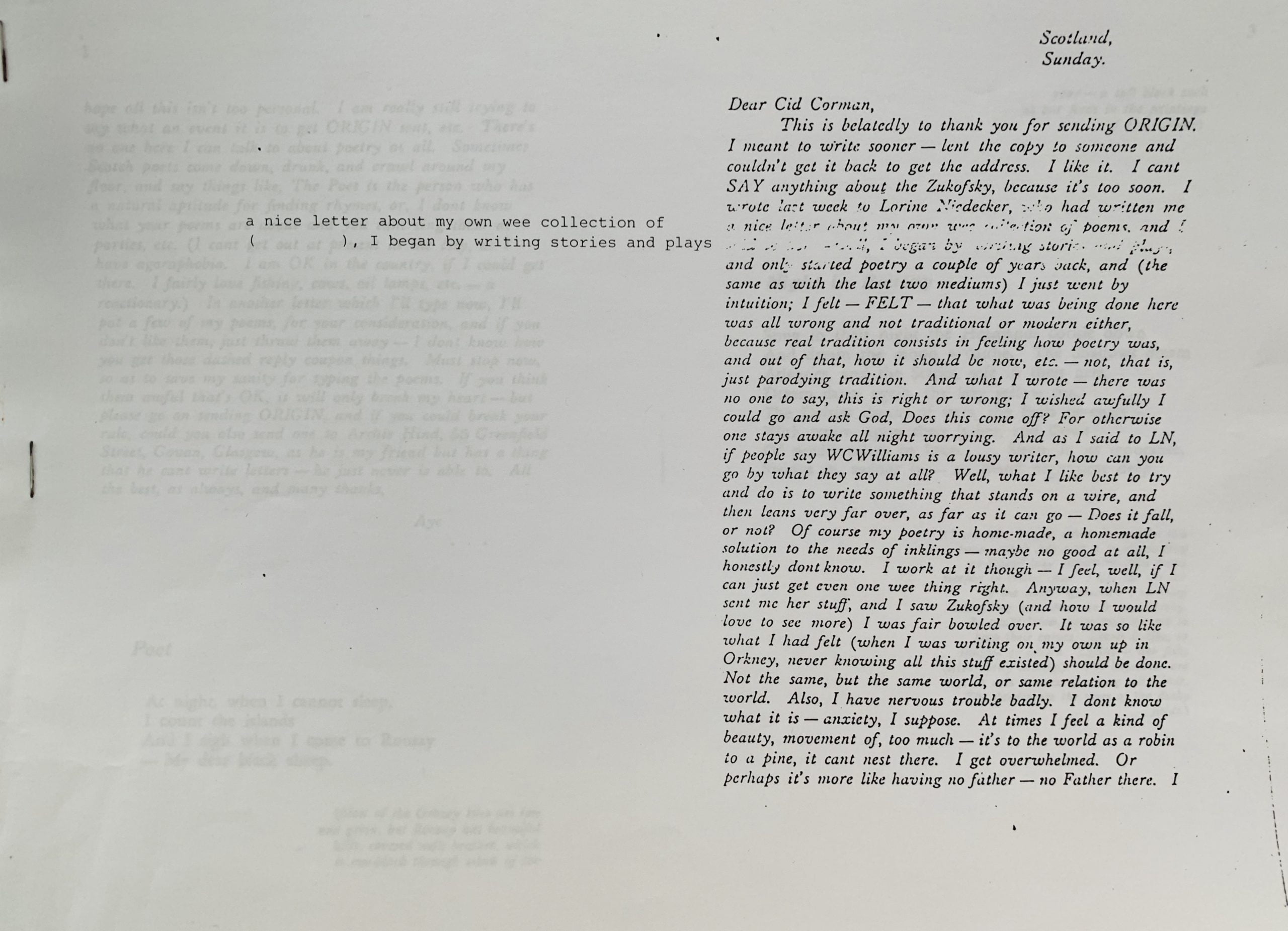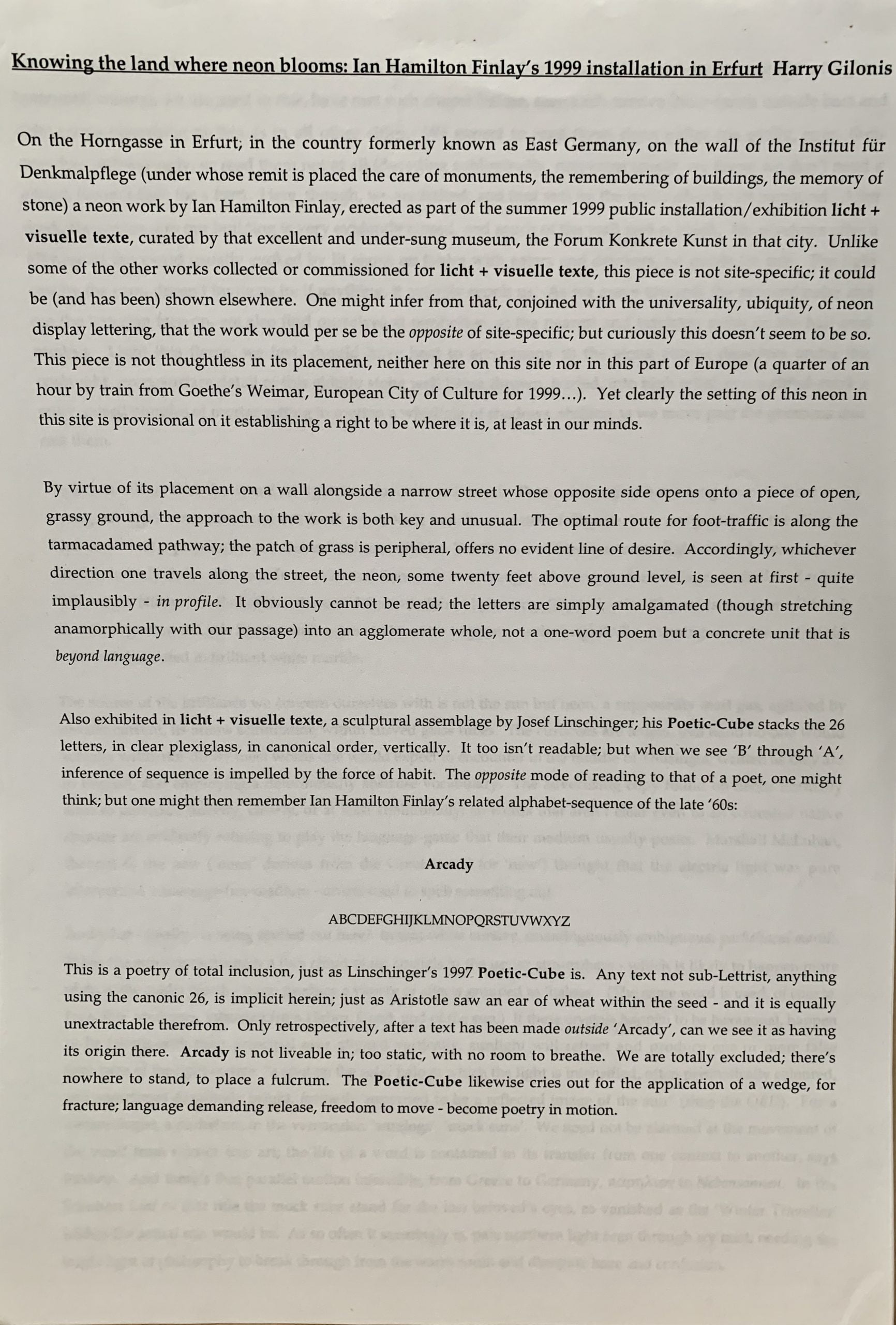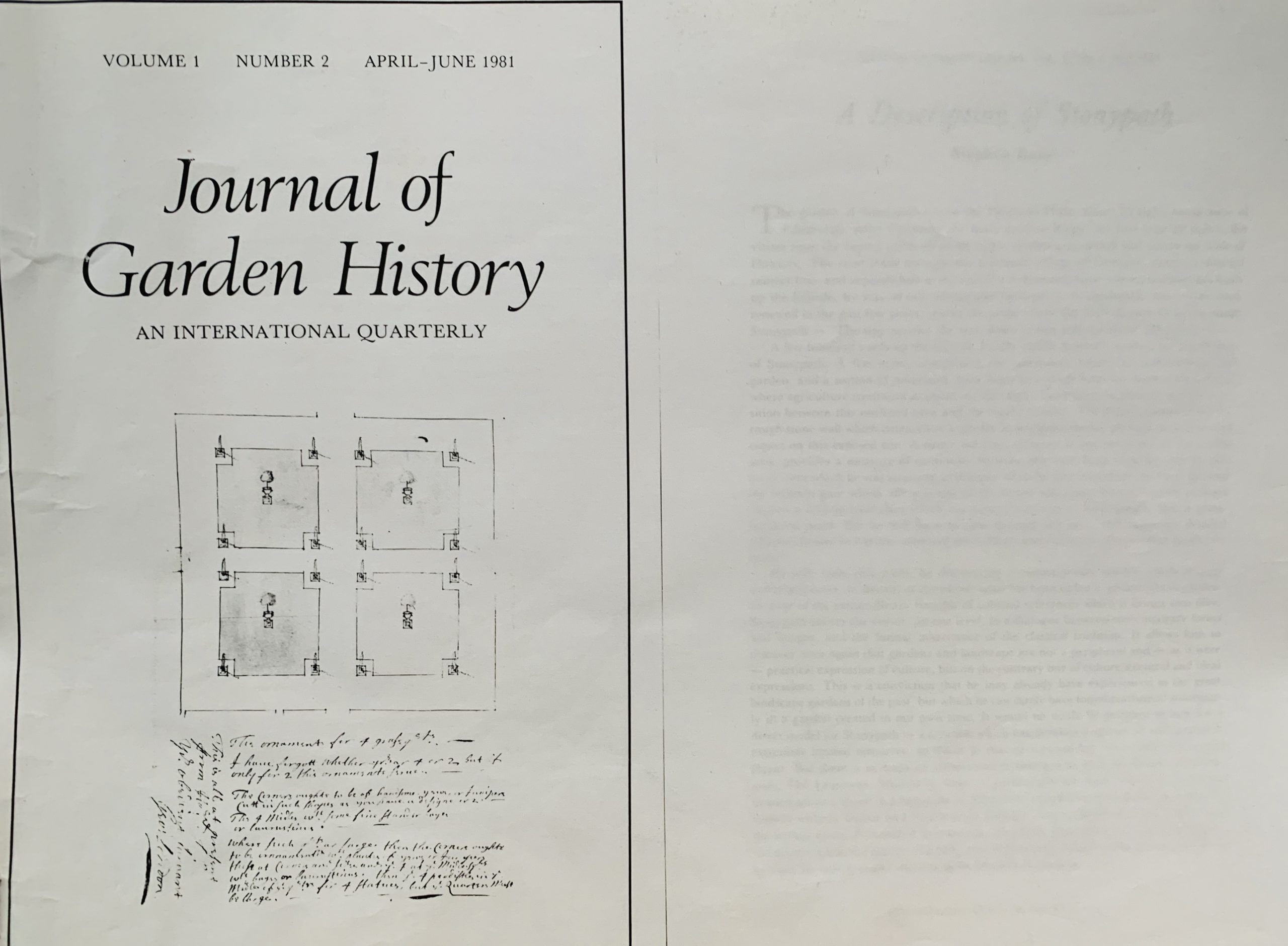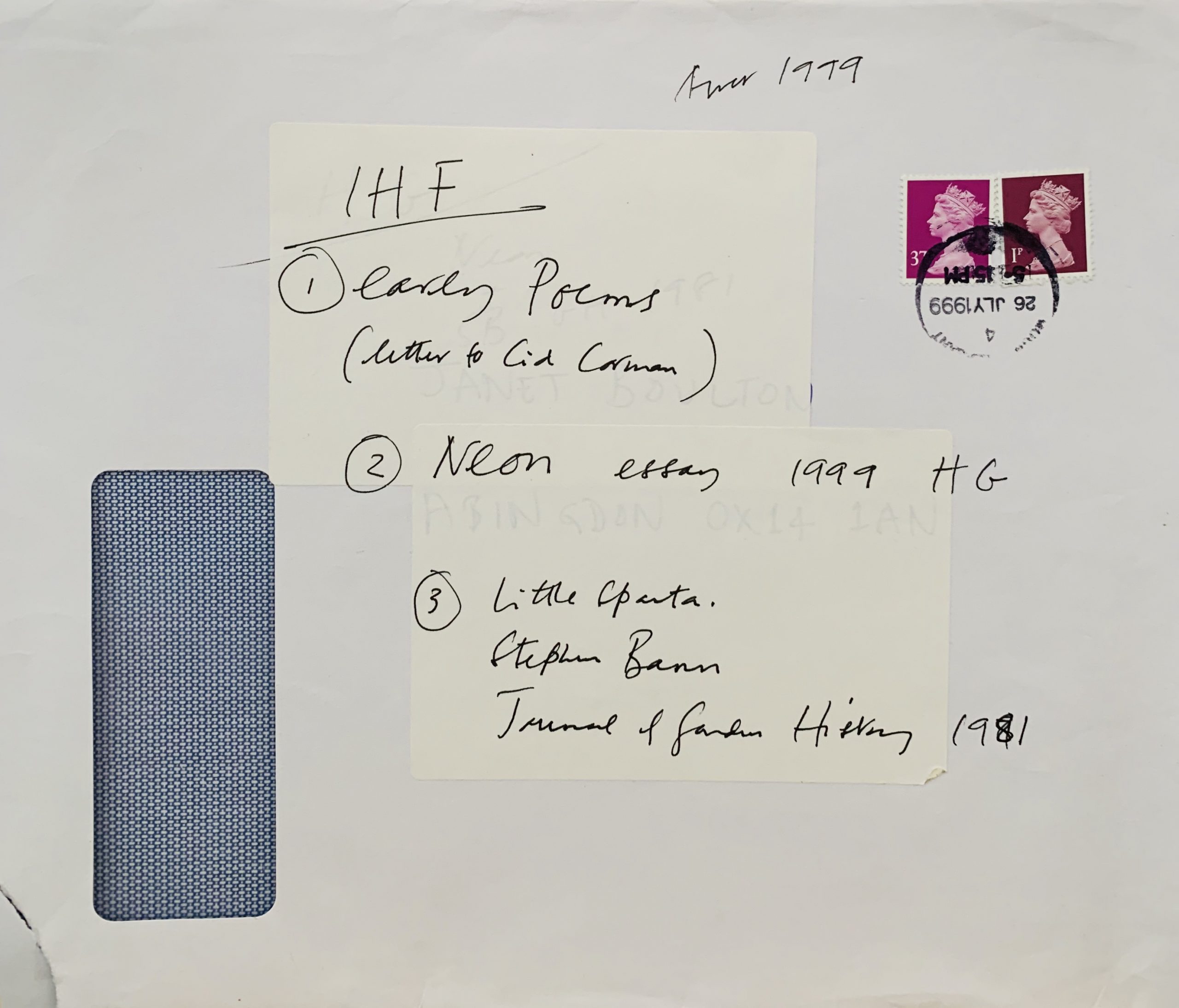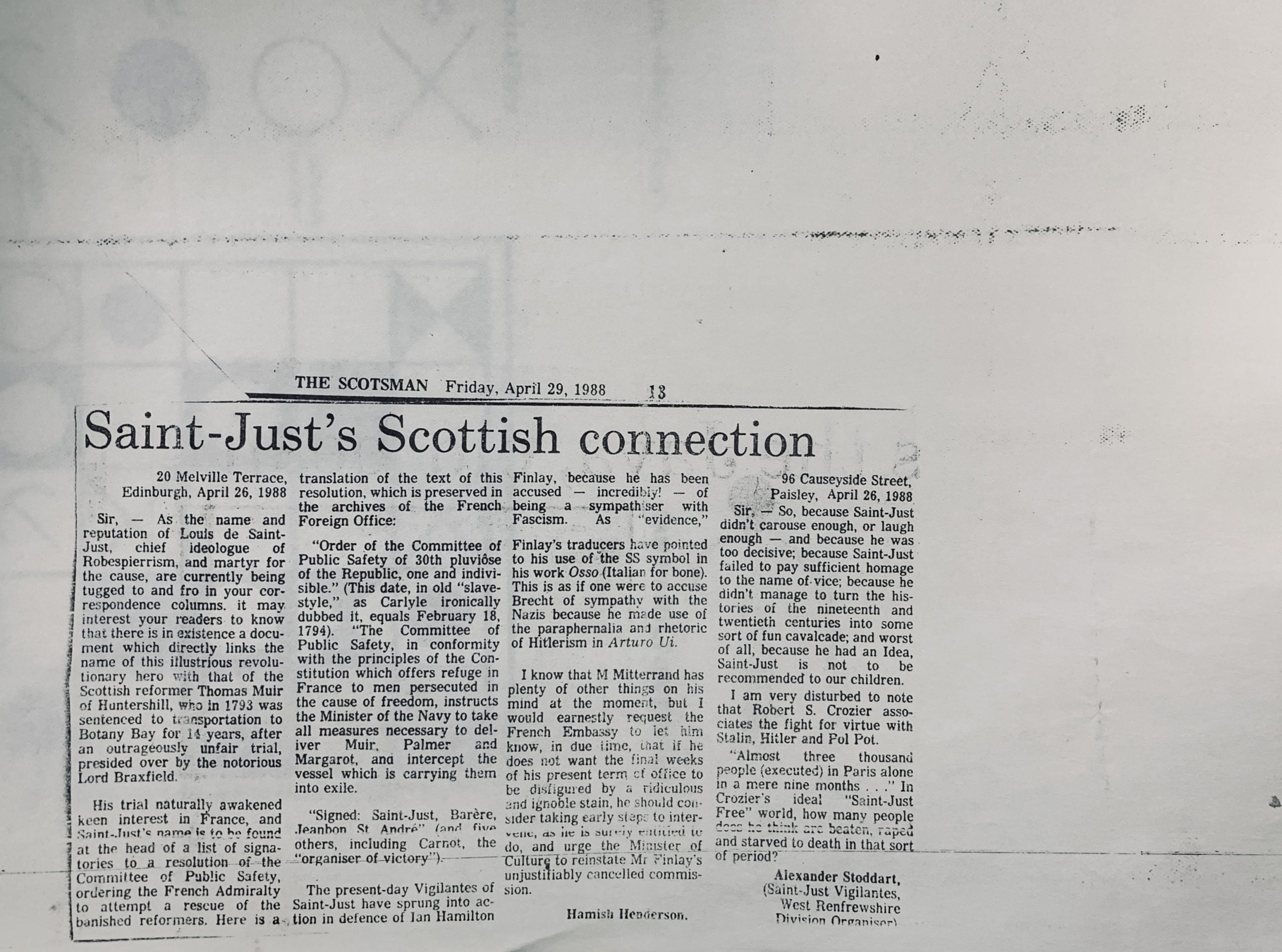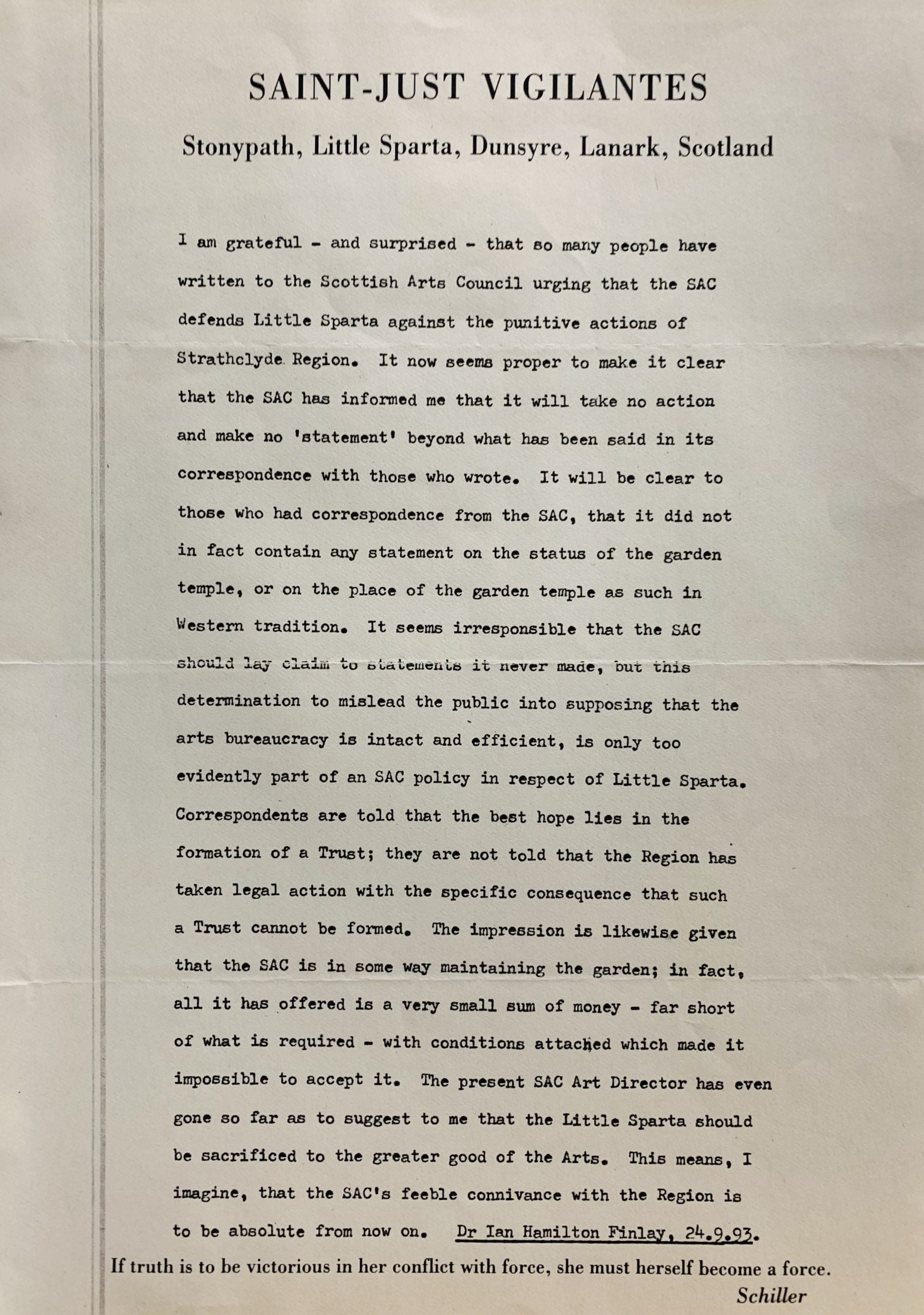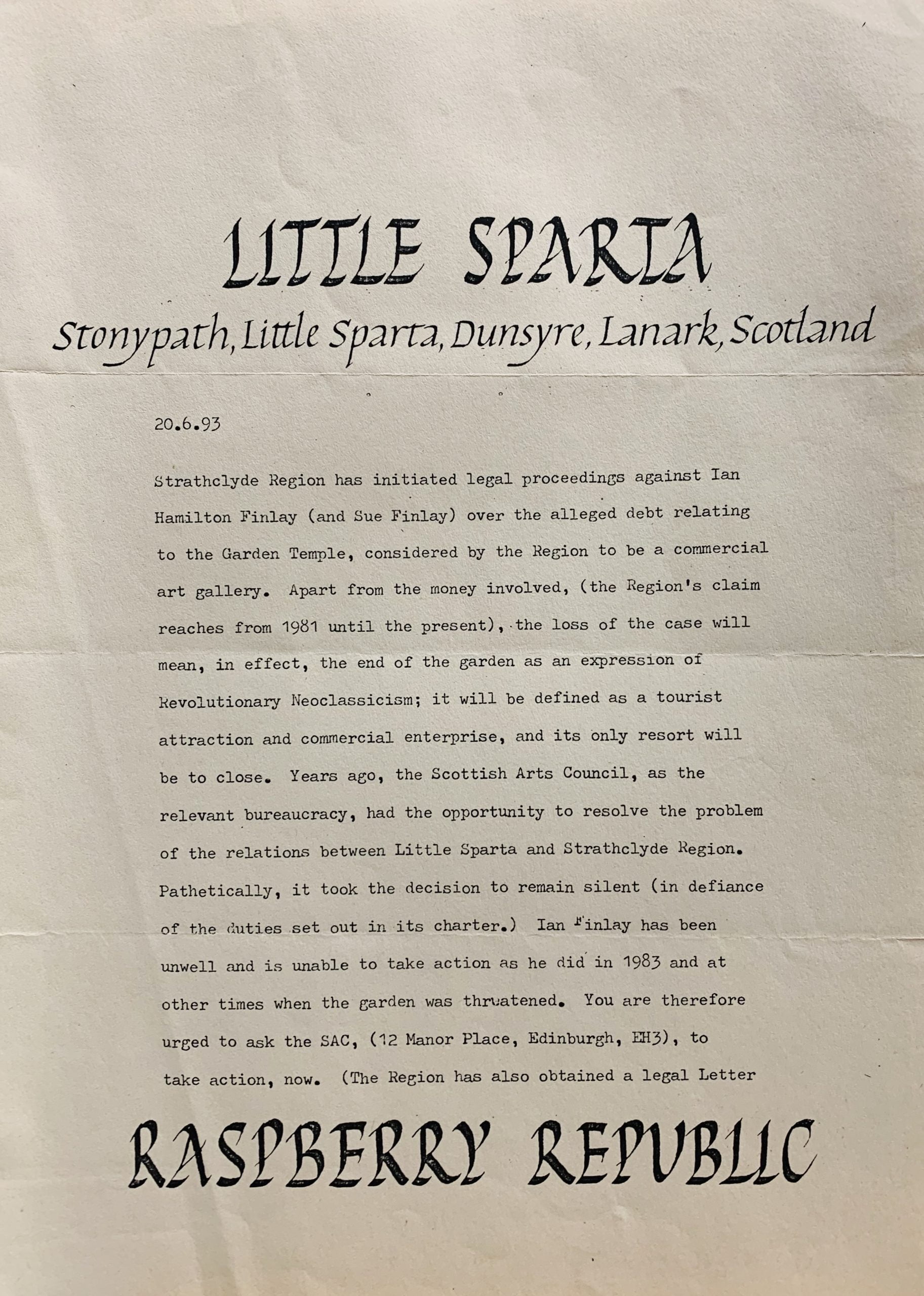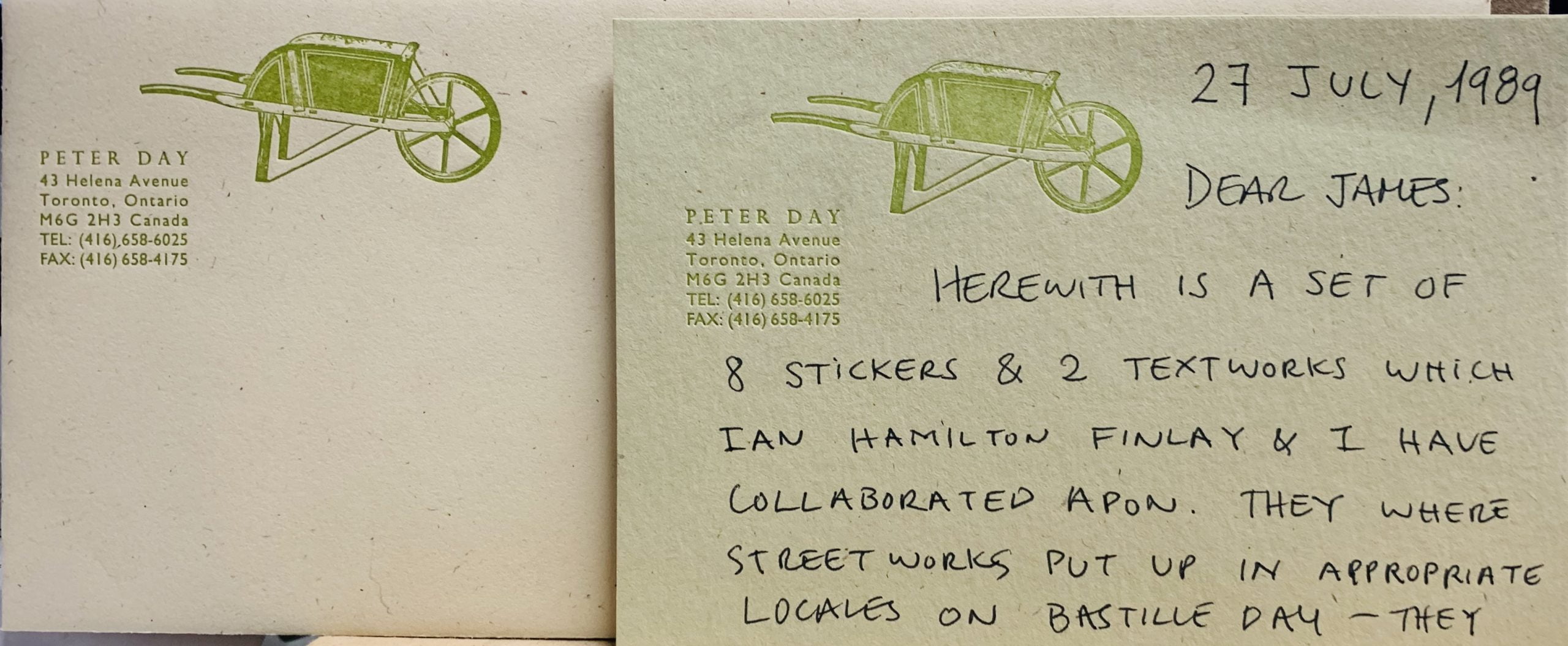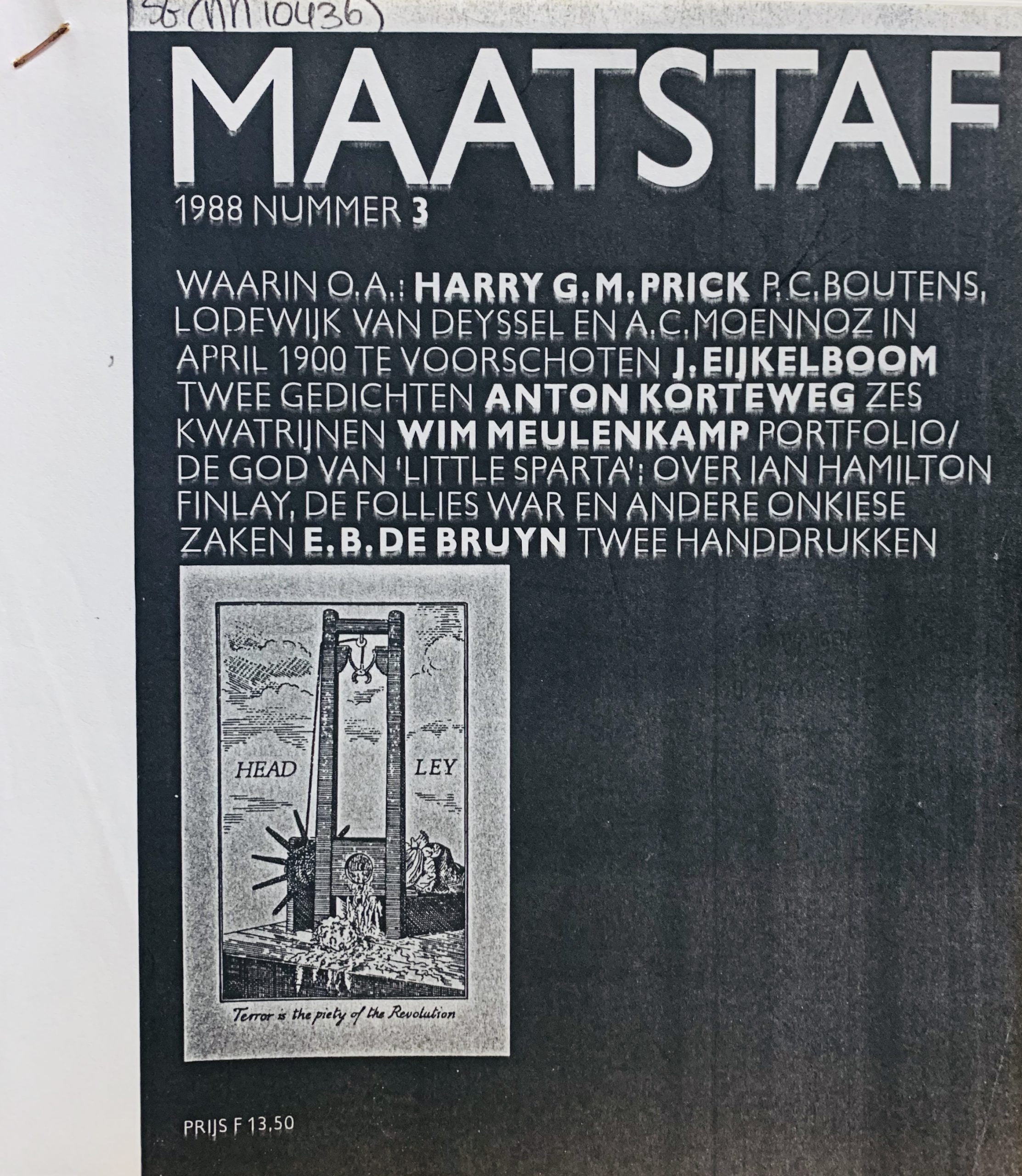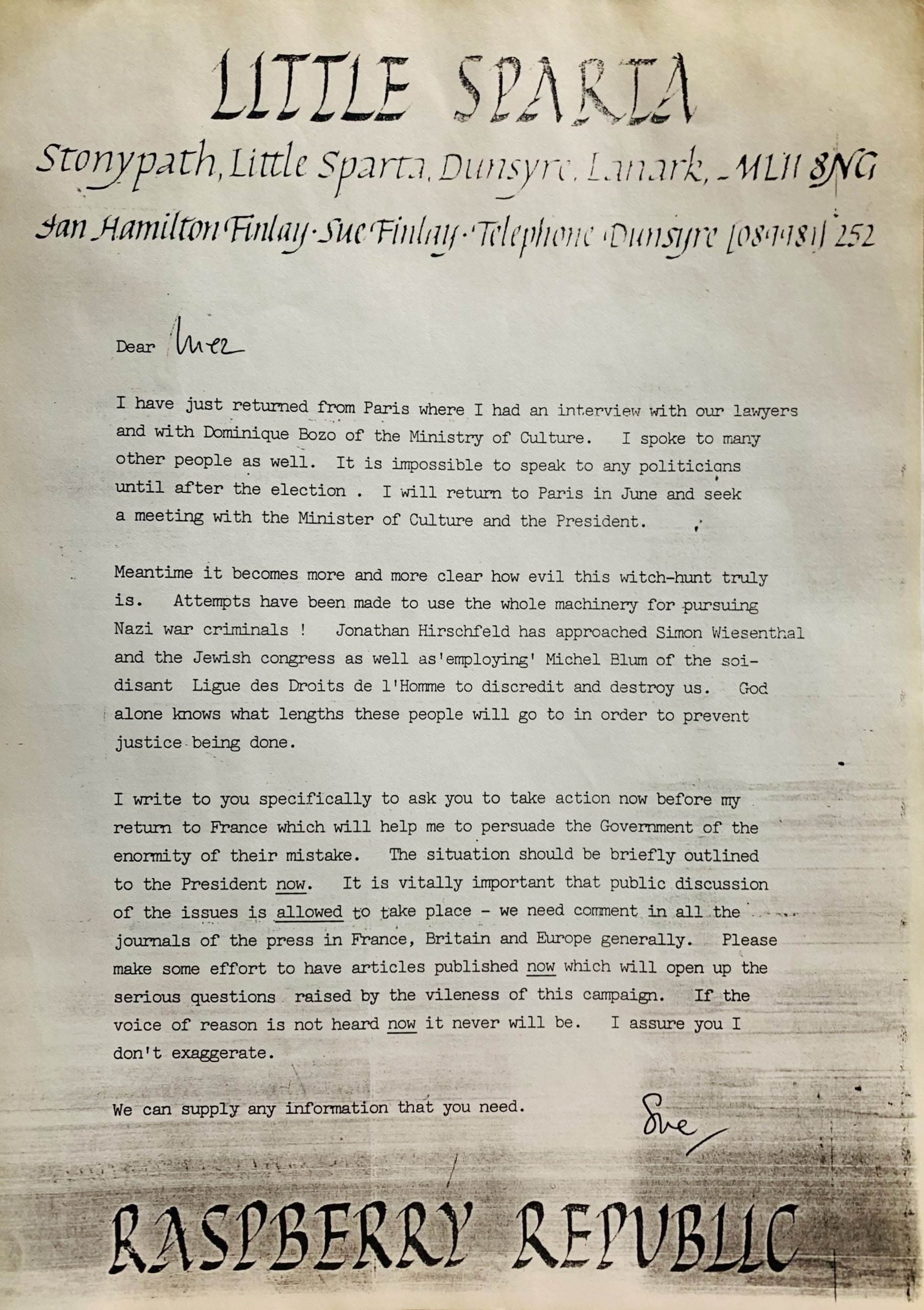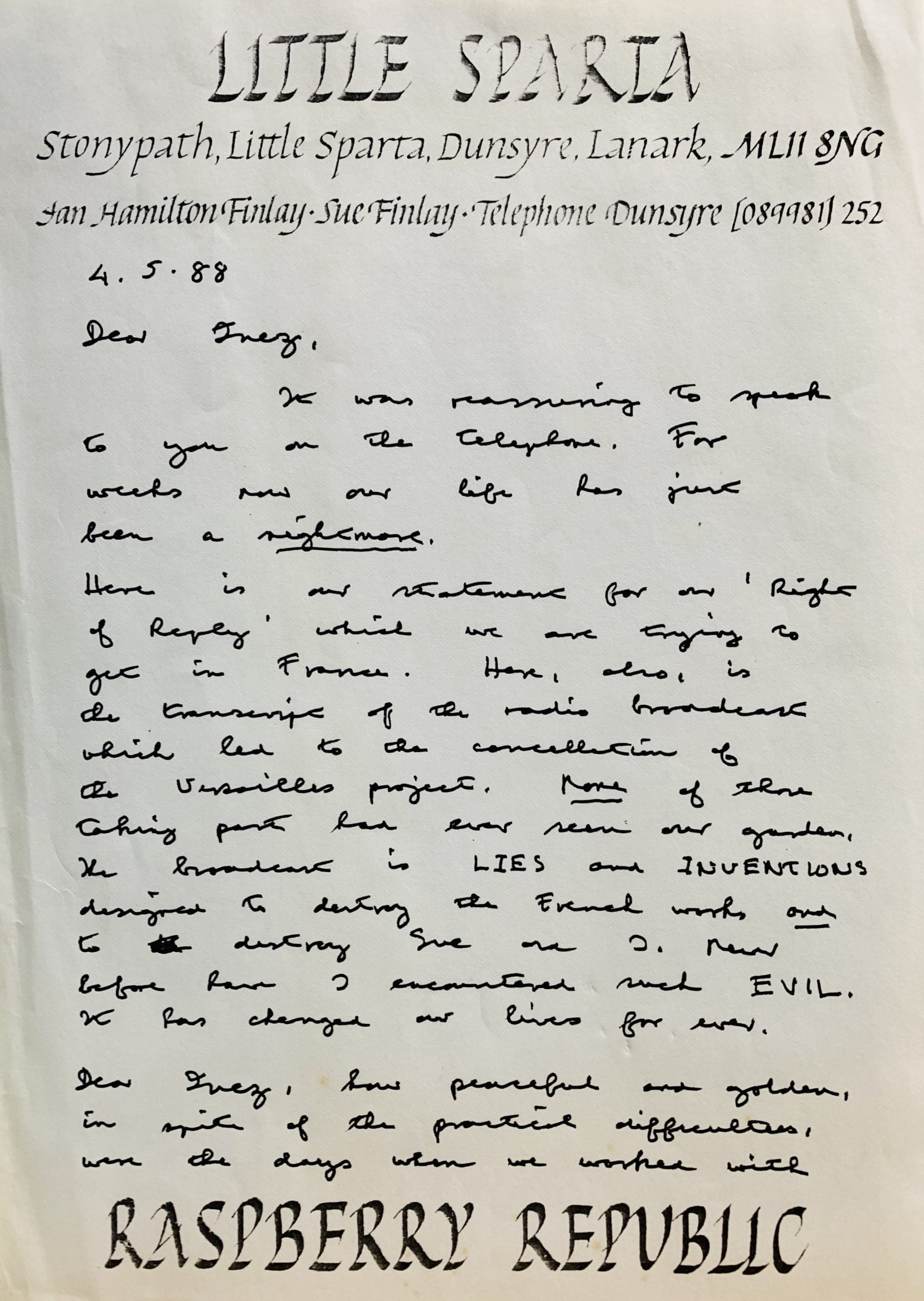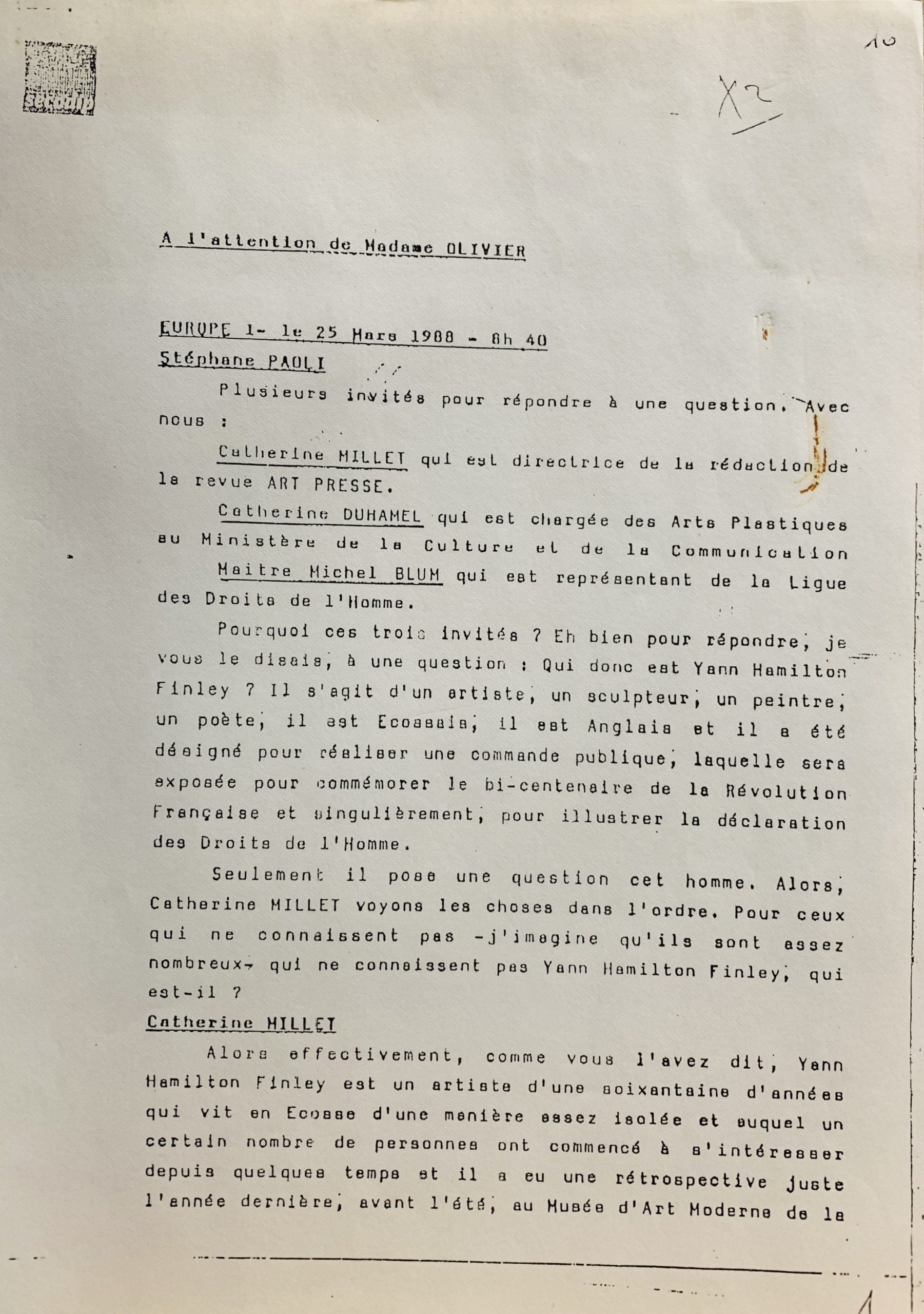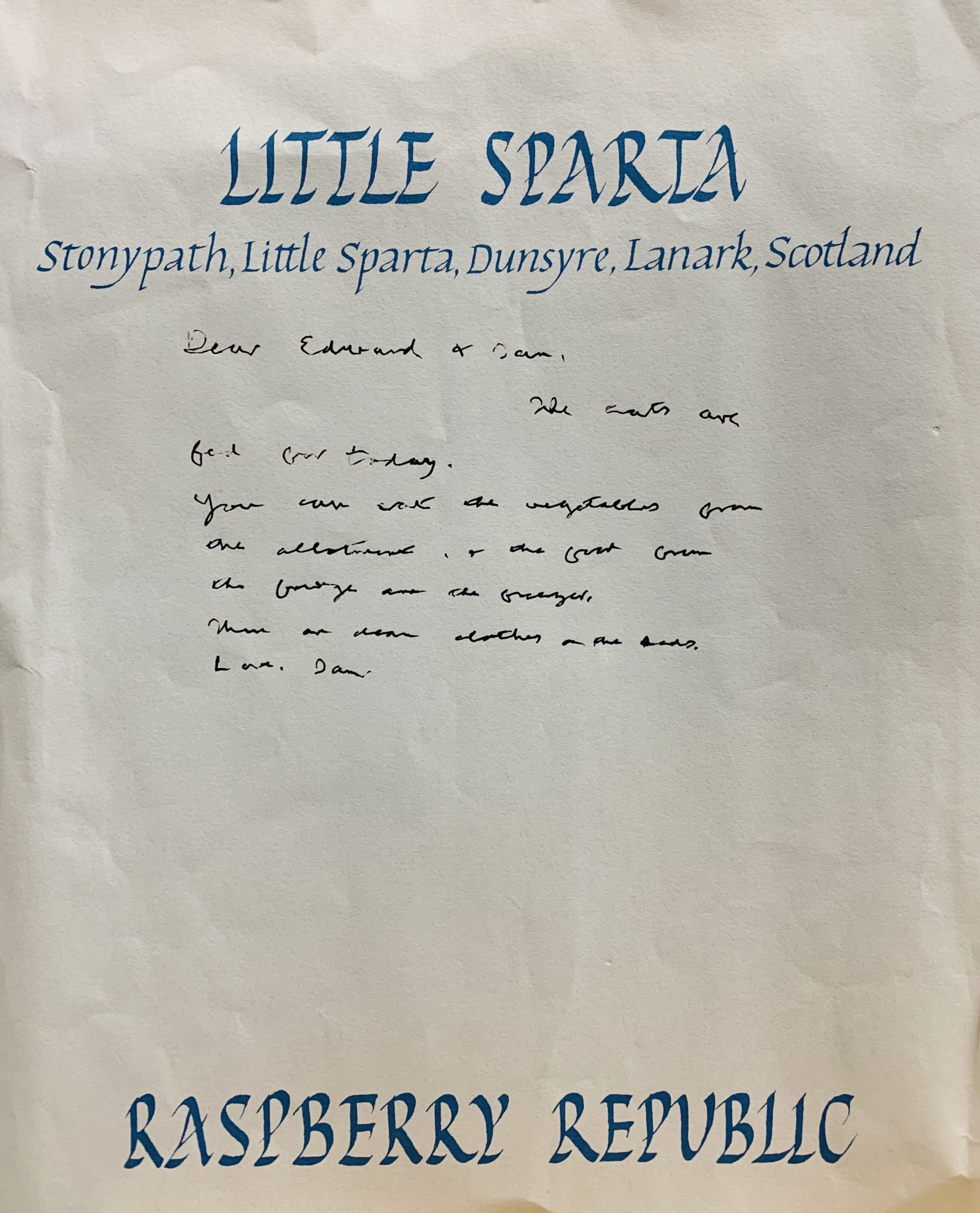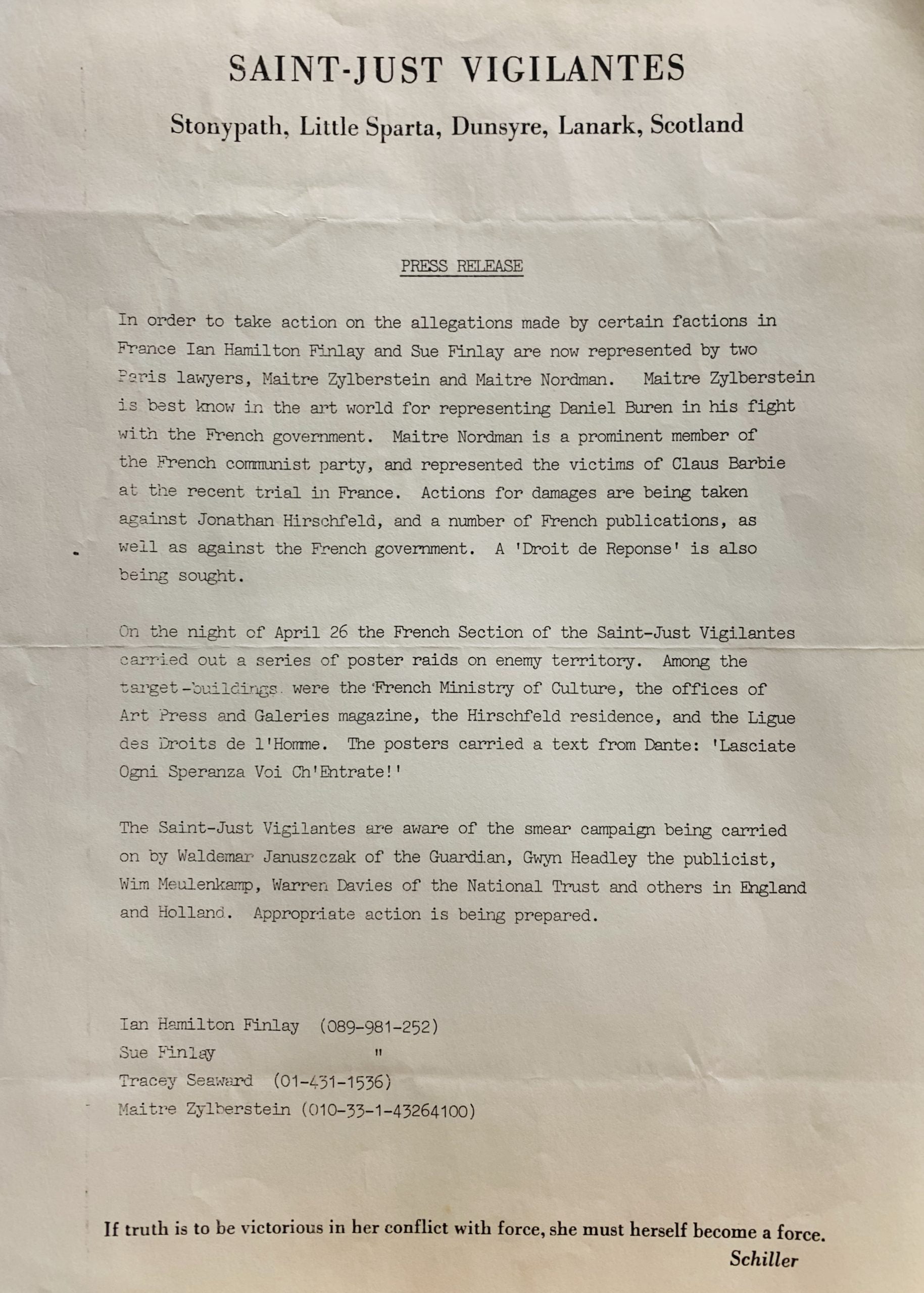Posted at 16:45h
in
Letters + Documents
Little Sparta: Finlay, n.d. (c. May 1988)
An original vintage xerox 30 x 21cm, 1pp statement from Finlay which is worth quoting in full:
"What is happening today in respect of Kurt Waldheim and Paul de Man is not a natural process of criticism - it is the systematic, vivisection, carried out by the obscene Mengales of 'democratic' letters. What is been demanded of fellow men - yes fellow men - is not that they made the correct moral decisions in their own time, not even simply simply that they were super heroes but they predicted and fell in with the pseudo moral linguistic fashions of 40 years on. Very well, let us anticipate the day when our vivisectionists are asked, not what they had to say, with on remarkable hindsight, about the deportation of the Jews, but what they had to say, looking around them, about the deportation of Arabs. And more, let us anticipate the question to be put to us: Did (sic) the huge inhumanity of these Mengales not produce in you a single letter of protest - not one tear in your eye, not one ache in your heart? Oh how brave you are, you who regard yourselves as exempt from history. See how you always fight those battles which others one for you a long time ago."
Kurt Waldheim was an Austrian politician who it was revealed to have been implicated in Nazi mass murder when he tried for a second time to become Austrian President in 1988. Paul de Man was a literary critic and philosopher who after his death had his previously unknown articles supporting collaboration with the Nazi revealed. Finlay seems to be arguing that moral positions cannot be taken aside from the historical context that they were made in. This is probably the least convincing of Finlay's arguments as Waldheim does seem to have known about the murder of Yugoslavian resistance fighters - which perhaps was not known at the time. But one can say it is a valid argument to make even if one does not ultimately agree with it.
...

